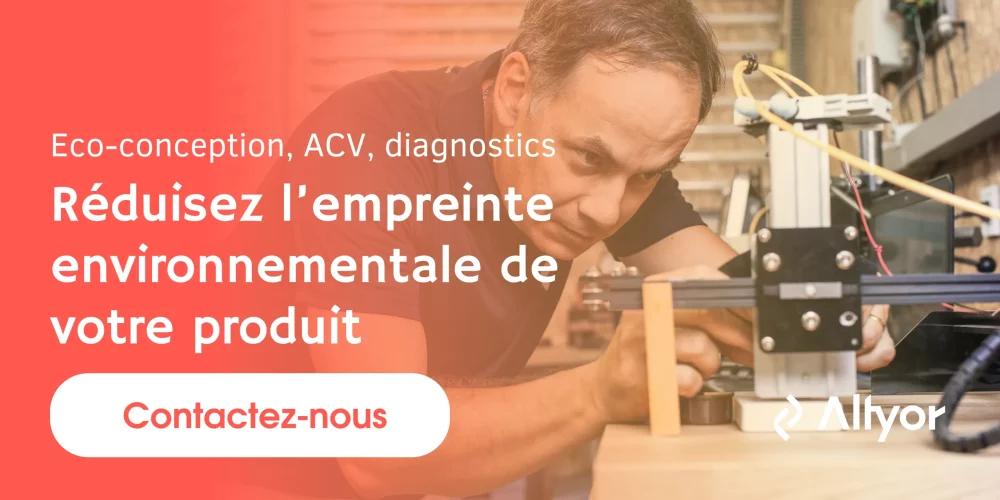Life Cycle Assessment (LCA) is an essential tool for measuring the environmental impact of a product throughout its entire life cycle. For electronic products, it is even more crucial. These items incorporate various complex components such as batteries and electronic cards. These have a significant impact on the carbon footprint of the final product.
At Altyor, we help companies design and produce responsible electronic devices.
In this article, discover the five key steps to successfully conducting your LCA and turning your constraints into business opportunities.
Why conduct an LCA of your electronic product?
Life Cycle Assessment is a recognised and standardised method for assessing the environmental impact of a product at every stage of its existence:
- extraction of raw materials,
- manufacture,
- transport and distribution,
- use,
- end of life (recycling, reuse, disposal).
It is also a response to your company’s strategic challenges:
- Regulatory: anticipate obligations related to carbon footprint reduction and circularity requirements.
- Economic: optimise costs related to energy, materials and logistics.
- Marketing: building customer trust with tangible evidence of sustainability
👉 To go further: Life cycle assessment (LCA)
Step 1: Make a detailed inventory of the product
A successful LCA begins with a comprehensive inventory of your electronic product. Every component counts:
- PCB,
- microcontrollers,,
- plastic casing,
- battery.
An accurate inventory enables the environmental impact to be modelled accurately and avoids approximations.
Step 2: Selecting the appropriate LCA software
To ensure reliable results, it is essential to select specialised software and databases:
- EIME (particularly suitable when electronics are predominant),
- SimaPro,
- OpenLCA.
These tools help you quantify the environmental impact according to component type and access internationally recognised data.
Ensure that the database includes detailed information on the electronic components in your product.
Step 3: Model the entire life cycle
A relevant LCA must incorporate all phases of the product’s life cycle:
- the extraction of raw materials,
- design,
- manufacturing,
- transport,
- use,
- end of life (recycling, reconditioning, disposal).
For electronic components, it is important to consider energy consumption during use, component lifespan, and recycling or reuse options.
Accurate modelling helps identify environmental hotspots and understand where improvements can be made.

Get a quote tailored to your project!
Step 4: Analyse environmental impacts
Once the modelling has been completed, the impacts must be assessed using several indicators:
- greenhouse gas emissions,
- energy consumption,
- use of metal, fossil fuel and water resources.
For example, in many electronic products, the battery is the main contributor to the carbon footprint. Identifying these ‘hot spots’ is key to guiding your design choices.
Step 5: Use the results to innovate
LCA should not remain a theoretical report. It is a decision-making that fuels your innovation and differentiation strategies:
- choice of more sustainable materials,
- optimisation of electricity consumption,
- responsible mechanical design,
- Reconditioning scenarios through the remanufacturing of your products.
👉 Learn more about product remanufacturing and the various reconditioning cycles.
Why choose Altyor as your LCA partner?
With over 30 years of expertise in the design and manufacture of electronic products, Altyor is the ideal partner to support your LCA initiatives:
- a proven methodology tailored to the specificities of electronics,
- an engineering office specialising in sustainable design,
- a comprehensive view of the product life cycle, from design to end of life,
- strategic support that makes LCA a business and marketing tool, not just an environmental one.
Take action
Do not let environmental constraints hold you back: turn them into opportunities for growth.
Conducting an LCA of your electronic products with Altyor means investing in:
- a tangible reduction in your impact,
- better industrial performance,
- a sustainable and distinctive brand image.

How do you perform a life cycle assessment (LCA)?
We can help you calculate and analyze your product’s ecological footprint using LCA.
Life cycle assessment is the starting point for understanding your product’s impact on the environment. To help you understand the ins and outs of LCA (Life Cycle Assessment), we’ve put together 14 answers that will shed some light on the subject.



